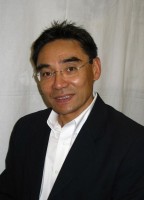Their paper entitled ‘Stabilization of Leidenfrost vapour layer by textured superhydrophobic surfaces’ was recently featured in the prestigious journal Nature.
The research looked at suppressing the bubbling phase during boiling point to prevent damage occurring to common surfaces.
Professor Chan said that to suppress bubbling whilst boiling, the team of researchers used a highly water-repellent surface to control the boiling state of the liquid, causing the boiling to take place in a continuous vapour film within the hot surface.
The non-bubbling boiling phase is known as the Leidenfrost regime, named after the scientist who studied water drops skittering on a hot skillet owing to their levitation on a cushion of vapour.
The experiments, led by Dr Ivan Vakarelski at the King Abdul University of Science and Technology in Saudia Arabia, proved that this observation doesn’t apply to smooth liquid surfaces, as cooling the vapour film collapses and the system switches explosively to nucleate boiling.
Professor Chan said the groundbreaking research is likely to have a significant impact on the industrial sector, reducing the risk of vapour explosions.
“Suppression of the bubbling phase could help to reduce damage to surfaces, or even explosions,” Professor Chan said.
“These properties will be useful for example in designing kettles that boil slower, generating less noise and splashing.”


